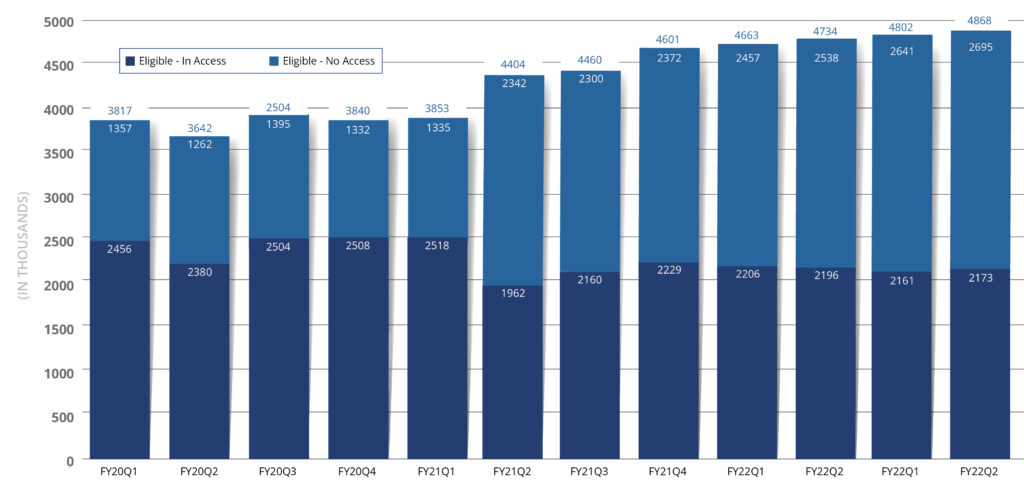The overall number of Department of Defense professionals with an active federal security clearance continues to move up, as the Defense Counterintelligence and Security Agency (DCSA) processing more investigations. Approximately 45,000 DoD/Industry cases are processed each quarter. Figured released by the Security, Suitability, and Credentialing Performance Accountability Council (PAC) show an approximately 66,000 increase in the clearance population, to a total of 4.86 million DoD security clearance holders. But in a reality felt by anyone looking to hire or onboard cleared talent across the industry, the spread between the ‘in access’ and ‘eligible’ populations maintains a deep spread, with more individuals out-of-access than those currently working in cleared roles.

We’ve speculated previously about why the in-access population remains 400,000 individuals below 2021 figures – great resignation, graying workforce, hybrid and remote work changes. The reality is that regardless of why the in-access figure stagnates, the reality behind that figure is already felt acutely across those trying to hire and fill positions in national security.
As the government continues to make progress in improving security clearance processing times, issues in hiring remain. While we have fixed a lot of aspects of the security clearance process over the past five years, and we’re on track to continue to improve the process even more thanks to Trusted Workforce 2.0 efforts. But none of those change the reality of actually having more individuals with clearance eligibility – and actively using that clearance in the workforce today.
While job growth slowed in October and major tech giants have been hinting at layoffs, the reality is the competition for tech workers, in particularly, remains strong, and cleared professionals do have options in the commercial sector. Couple job moves with an aging workforce and pipelining issues remain primary for government contractors. In addition, the overall number of cleared professionals, while steadily climbing over the past several years, still remains lower than 2015 figures, and the era when then Director of National Intelligence James Clapper ordered an audit of cleared professionals and eliminated practices of keeping cleared employees on the bench for upcoming hiring needs rather than current contract requirements.
A provision in the current Senate Intelligence Authorization Act looks to open up opportunities for sponsoring security clearances for individuals not directly tied to a contract – specifically support staff. But government contractors argue the need isn’t just for more options for creating one-off positions to support individual contractors, but a process for creating a pipeline of cleared talent that can be sponsored and onboarded.
The overall cleared population continues to go up – that’s the good news. But with the out of access population increasing faster than the in-access population – and government contractors still struggling to fill positions – it’s clear there is much more behind the numbers that has nothing to do with growth.



